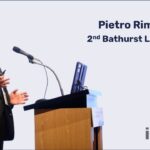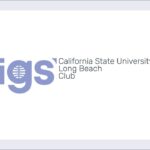
Italian Chapter board member Francesco Fontana has been involved with the IGS for 13 years. Now re-elected to the 2020-2024 IGS Council, he shares his ambitions for his tenure and why he thinks it is “time for the IGS to fly even higher”.
Congratulations on your re-election to the IGS Council. What do you hope to achieve in your second term?
My first term was an exciting experience with interesting people from all over the world discussing topics important not only for the markets but for the whole planet.
I’m very happy and thankful for the trust the technical community has shown by giving me the possibility to keep serving as a Council member. I want to increase the environmental awareness of all parties involved with geotechnical themes and enhance IGS collaboration with the standardization committees and the associations of manufacturers and distributors.
What do you think will be the challenges and opportunities for the industry over the next few years?
Geosynthetics has to face the challenge of a general public that is more and more wary of plastic materials. In my opinion this topic has to be turned into an opportunity to highlight the extraordinary advantages geosynthetics can provide in terms of environmental benefits, both for reducing the impact of construction activities, and to repair the damage created by global warming. Good plastic products are part of the solution for the bad plastics problem.
How has the IGS evolved since you joined?
I feel the organization is getting less formal and academic, with all respect for academia of course, and more and more willing to be effective by involving industry, public authorities, and other stakeholders. While it is still fundamental, now the challenge is not just to promote engineering knowledge about designing with geosynthetics – the cultural battle we have to fight is much wider. Also geographically, the IGS is now a global entity, with a lot of fresh and enthusiastic participation from all continents.
What do you do outside the IGS? Do you have a geosynthetics specialism/area of interest?
Professionally I’ve been a nonwoven geotextiles manufacturer for 35 years. My father was a geotextile pioneer in the early Seventies, and I’ve always tried to combine knowhow about textile production with an effort to understand the needs of geotechnical applications. I am very much involved with standardization activities within CEN and ISO committees. I’m also active in the board of the EAGM, the European Association of Geosynthetics Manufacturers, so I try to represent the voice of industry within IGS, CEN, and ISO as well.
How has the industry changed, and how do you see it developing?
When I started my experience with geotextiles, everybody used to propose their product as the best for any application. Knowledge was poor; anything textile-like on the ground was considered a geotextile. Even the arguments to sell were not strictly related to performance. Knowledge has grown dramatically, to a large extent thanks to IGS conferences and activities.
The manufacturers are now much more specialized and professional. Today it is much more clear what to use, and when, and how. On the other hand this knowledge is still too much a specialist skill. In my opinion it is time for the IGS to fly even higher, and bring to the rest of the world the experience of our still too small technical community. I think we need to send our ambassadors to the conferences of other markets to enable the rest of the world to understand the benefits of geosynthetics.
What do you think are the current key priorities for the geosynthetics industry, and why?
Environmental matters are the priority for the whole world, and geosynthetics are in a prime position to play an important role in leading here. I think our industry has to properly communicate our position, distinguishing emotions from facts, as well as promoting best practices and specifications. Correct design is a part of the sustainability picture as well. I really believe in what the geosynthetics industry can do for the environment,, but the industry has to work together.
Do you have any memorable anecdotes from IGS events or projects?
I remember with pleasure both the goal I scored in the soccer match at EuroGeo3 in 2004 in Munich, and the technical discussions with Professor JP Giroud, always great for opening your mind.
In terms of projects, I want to mention a small job more than 30 years ago. Upstream of the Cismon river in the valley where I live in north-east Italy there is a tall concrete dam, the Diga del Corlo, and they needed to clean the bottom bulkheads, flooding the whole river with a huge quantity of mud. There was no budget at that time for environmental protection.

We proposed a very cheap, round stones barrier simply wrapped with an appropriate geotextile, to create a temporary basin at the foot of the dam for decanting the mud. The work was done overnight, and notwithstanding the skepticism of some old engineers, it worked well for the whole week needed to empty the lake. This operation preserved the ecosystem of the river. It was my product, it was my valley: this success made me really fall in love with geotextiles, and now the planet is my valley.

Over the years I’ve been involved in some big and prestigious projects around the globe, but for me pride comes from looking back and realizing how your efforts have helped build a better world through many daily battles, even for small and obscure projects.
What do you enjoy the most about being involved in the IGS?
Together with the technical skills you can learn, the best thing about IGS events is the atmosphere: professionalism and friendship at the same time, what more can you ask from a workplace? At the IGS you feel what you are doing has an effect on the real world when organizing seminars, preparing technical guidelines for better design, or glossaries to make engineers better understand each other.
What are you most looking forward to in the IGS calendar?
Many IGS meetings and conferences have been affected by COVID19. Let me express my understanding and solidarity for everyone who has worked hard to re-organize everything for events like EuroGeo7, GeoAmericas 2020, and GeoAsia. I’m sure their efforts will turn these events into an even bigger success.
In the meantime, turning again a problem into an opportunity, we have seen also benefits within IGS as the virtual interactions which enable more people to attend the meetings, reduce the costs, and discuss topics more frequently. This is something I hope will remain.
I am also involved in a very exciting IGS Task Force group about the Circular Economy, led by IGS Vice President Dr Nathalie Touze. It started right in the middle of the general lockdown period: the IGS never sleeps!
Do you have any messages for members?
I recommend being as active as you can in the IGS at international or local level. Let’s also make it easy for the young people to attend the IGS conferences, I’m sure they will develop passion and enthusiasm. Participation is always a plus.
I would also like to remind members about the Rome 2022 12th International Conference on Geosynthetics on its way, to be held at the Parco della Musica, a beautiful auditorium in the eternal city. IGS people, prepare your performance!
* Learn more about the 12th International Conference on Geosynthetics (18 – 22 September 2022)





















